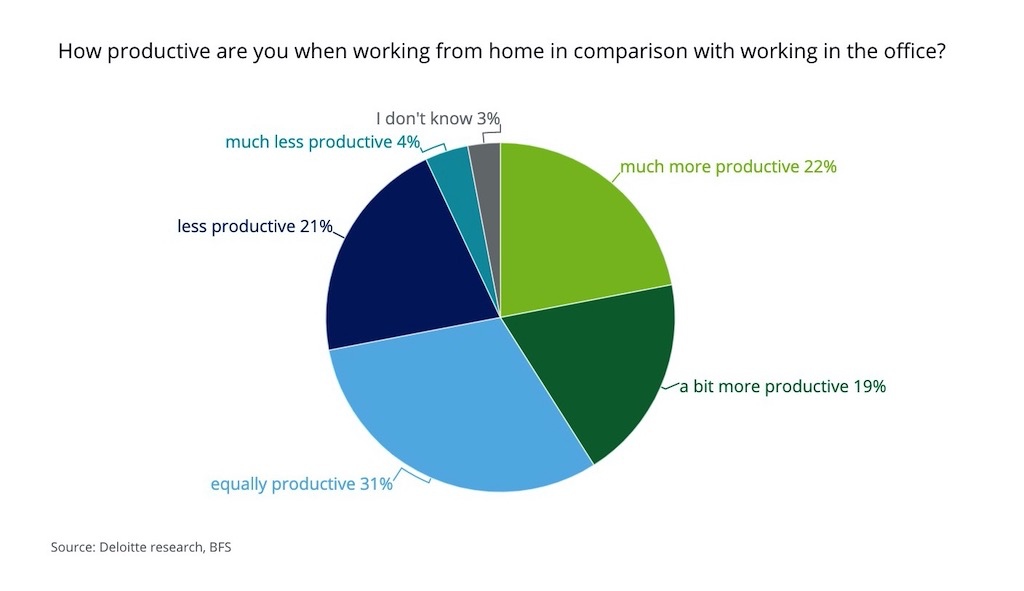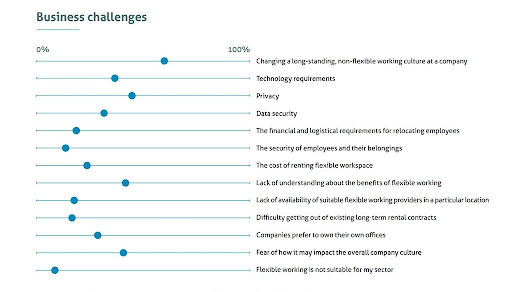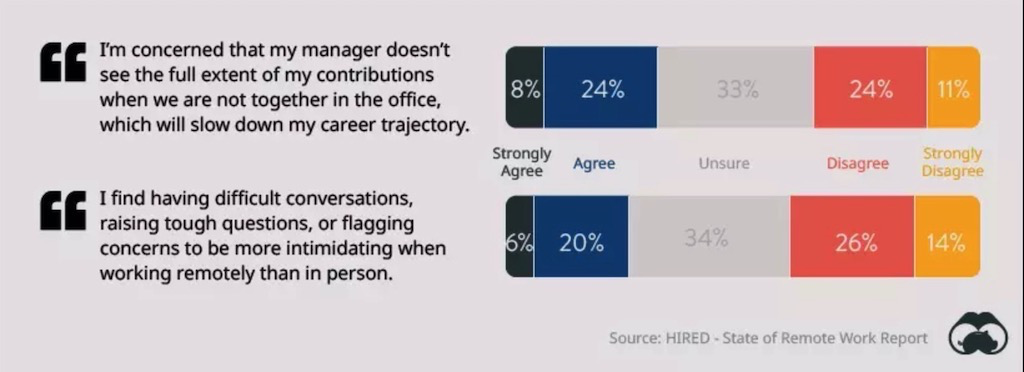How Colocated Companies Can Adapt to a Remote Work World
Up until 2020, remote working was a new, popular trend among a small niche of tech companies. This work arrangement is promising such a shift in the way companies operate that an industry has started to emerge around it. Speculations have been arising about how it might change the incentives for acquiring talent.
Since the COVID-19 pandemic started, remote working has no longer been a perk. It’s been a reality. Organizations from all sizes and industries have been forced to adopt it — most of which struggle to adapt to the challenges remote working creates.
Remote working has come unannounced, and it’s unlikely it will go away in the foreseeable future. Surveys have shown that employees appreciate the idea of home working, even before the pandemic arose. So the question isn’t how companies can go back to work like in the past, but how they can adapt to remote working once the pandemic is over.
In this article, I want to explore three ways non-remote companies can adapt their current situation and the post-pandemic world that’s to come.
Help Your Employees Adapt
At first sight, it’s easy to think that the challenges remote working have created have fallen greatly on the top management of companies, regardless of their size. Managing dozens of people exclusively through online channels is not an easy task, and it can significantly hurt the productivity of everyone involved in those tasks.
At the same time, it’s easy to believe that the benefits of home working fall mostly to the employees. Many of their jobs, including sales, marketing, engineering, or administrative work, can be done remotely. Why wouldn’t employees want to work from their home, wearing only their slippers and pajamas?
The reality differs from this naïve perception. A change in the work environment affects work productivity, both from the better and for the worse. Over 20 years ago, AT&T gave its employees the opportunity to telecommute from their homes. When the researchers came back to analyze the results, they found the employees loved the new arrangement: 87% of them believed their productivity and effectiveness had improved.
A recent Deloitte survey done during the pandemic found that over 70% of the respondents considered themselves more or equally productive when working from home. Only 25% thought their productivity might suffer from the arrangement.

But as someone who has worked all his life remotely, I can attest that the early benefits of remote working soon fade away. Like a small floating iceberg whose real size is hidden underwater, the challenges of remote working start to appear.
The first realization is that, under a remote working arrangement, you are alone. For many people, this has a significant impact on their mental well-being. A 2018 survey found that 48% and 46% of respondents admitted to finding remote working “lonely” and “isolating”, respectively.
Home working also blurs the separating lines between home and work life, resulting in involuntary unpaid work. When your home is your work office and your office is your home, your life becomes your work.
A final consideration, which only applies to the COVID-19 situation, is that at-home workers have to deal with their family — if they have one — and other distractions. Working close to a bed or a TV with your Netflix account can cause serious productivity issues, as anyone who has ever worked from home can attest.
Unsurprisingly to me, Deloitte’s survey found the workers interviewed complained about these same challenges:
- Almost 50% disliked having no personal interactions with their colleagues and clients.
- Close to 20% worried about their mental well-being due to their isolation.
- Around 30% struggled with the distractions imposed by their kids or family.
- Almost 16% did not have a designated workspace at home.
A big part of the problem comes from the fact the situation is forced. Once employees can decide to work from wherever they like, some will choose a mix of home-based and office-based work, while others will not have the distractions caused by the presence of their kids in their homes.
Still, this is a big problem to address both in the short and the long term. Consider implementing some of the following ideas as a short-term palliative to these issues:
- Give employees time to disconnect during certain times of the day. Have them add a block of time during their workday to break from their computer, which shouldn’t include lunchtime.
- Incentivize personal communication through Slack, Zoom, and other tools. Consider developing new activities like setting an hour every week where people can work while on a Zoom call.
- Give your employees access to special apps like Freedom or Brain.fm to help them fight distractions and increase their concentration.
- Reimburse your employees for expenses in furniture and other purchases to build a workspace in their homes.
- Run weekly surveys to track employee’s sentiment and proactively seek to improve whatever negative situation shows up in the results.
You must give your employees the capacity to adapt to the home-based life. Support them, especially those who openly dislike working from home.
Adapt Your Processes to the Remote World
The crisis the pandemic has caused may lead some to believe that it’s a transitory situation that soon will go away. It’s hard to deny that, eventually, the situation will go back to normal — even if it’s a new normal.
Whatever happens in the future — whether that includes future pandemics or other similar crises — one thing is for sure: your employees will likely desire a remote work arrangement. Not only does remote work have intrinsic financial advantages (such as less business office rent), but some people will ask to work from home, even if it’s done a few times per week.
For employees, however, the problem of developing such arrangements lies in the corporate culture. A survey done by the International Workplace Group — the owner of office space giant Regus — found that over 50% of respondents considered their company’s non-flexible culture as the main impediment to implementing such a policy:

The survey also found that three out of four workers around the globe consider remote working to be “the new normal.”
You need to understand that flexibility is the new cool, and it ain’t going back. To overcome such issues, you want to take a long-term strategic approach to your work operations.
There are hundreds of tools that fit perfectly with a remote work environment. Here’s a shortlist of popular tools that you should consider using in your company:
- Team communication: Slack, Zoom, Microsoft Teams.
- Project management: Asana, Basecamp, Notion.
- Productivity: Hubstaff, Zapier, Loom.
- Documents: Google Docs, Confluence, Grammarly.
- Collaboration: Google Drive, Dropbox, Box.
I know many of them are obvious choices — such as Slack, Asana, and Google Drive. Using these tools is one thing, but having them foster and improve your team’s productivity is another.
For example, Slack has hundreds of integrations that can make work much more efficient for every team in your organization. Zapier adds an ever more complex and extensive set of integrations your team members can use to simplify their work.
What’s more, you need to create habits around the most efficient ways to use each tool to promote collaboration and communication. As an example, I previously proposed using Zoom calls, where the whole company can communicate openly.
These radical ideas will resonate with your company, overcoming the most common challenges people face when working remotely. Such unique, open communication tactics can even become the unique selling proposition for attracting top talent into your company.
Since online communications tend to be more inefficient than in-person ones, create standard operating procedures (SOPs) for every task possible and make them easily available for everyone in your organization. This will help you save time and increase efficiency throughout the organization. From explaining how tools work to how people use them most effectively, these SOPs centralize solutions and simplify any issues that can arise during the adaptation period.
Remember to be patient. This new work environment can take some time to work like it used to. Be willing to try new tools, ideas, and tactics for improving team communication and collaboration. Failure should not be a problem.
Finally, listen to your employees to see what they think about every new activity or tool, and take their feedback to improve the way you use them.
Incentivize Open Communications
Remote work has one big challenge compared to its on-site counterpart: communication. One study found that face-to-face communications are 34 times more effective than email. Something similar could be said about Slack chats and phone messaging.
As a leader, you need to develop the habit of open communication for everyone involved. The idea I shared before about company-wide Zoom calls is just an idea; what truly matters is the attitude toward communication.
A Buffer survey found that 32% of employees thought their managers didn’t see the extent of their contributions when working remotely. 26% also considered it hard to raise attention to the problems they found.

What this tells you is that having a proactive attitude towards communication is a priority. You want to reach out to team members one-on-one, helping them adapt to the new environment, and share any feedback they have along the way. Setting up calls should be a common activity — as long as they can be justified.
Run surveys weekly to see what challenges people see when starting a remote work arrangement, or what on-going challenges they face after starting one. Act on the feedback you receive and strive to make it easier for everyone to work at their best from their homes.
Conclusion
The way businesses run their daily operations has changed dramatically since the beginning of the pandemic. Even when the pandemic disappears, it will continue to exert a great influence on how business is done. So adapt to the new environment, because remote work is the new normal. Listen to what people say. Using Slack or Zoom isn’t enough. Actually read employees’ comments and respond to them.



